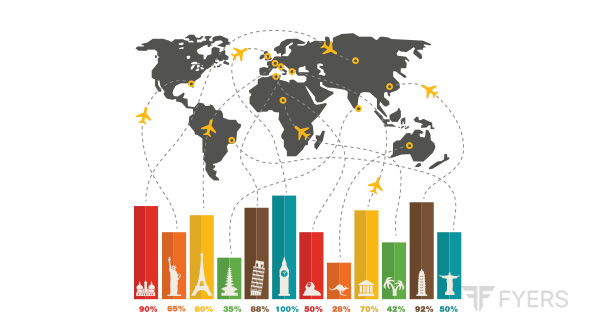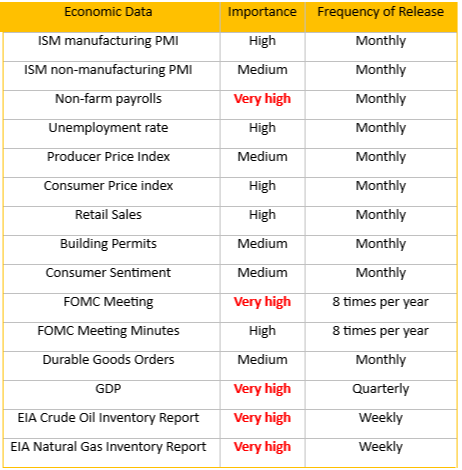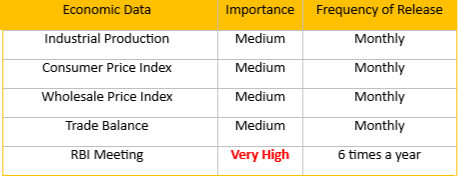
The global trading hours
Broadly speaking, the global trading hours can be divided into three parts:
- Asian hours
- European hours
- US hours
In the context of the Indian Standard Time (IST), the Asian hours refer to the morning session. It is prevalent when the key markets in Asia-Pacific region are open. These include markets in Shanghai, Singapore, Tokyo, Mumbai, and Sydney. It usually stretches from 6 AM IST to 1 PM IST. Towards the end of the Asian hours, Europe begins trading. The European hours refer to the afternoon session. It is prevalent when markets in Europe are open. It usually stretches from 12.30 PM IST to 9 PM IST. Finally, towards the end of the European hours, the US begins trading. The US hours refer to the evening session. It is the time when markets in North America and South America are open for trading. It usually stretches from 7 PM IST to 2 AM IST.
For a few hours, there is a confluence of two markets being simultaneously open. For instance, between 12 PM IST to 2 PM IST, both the Asian and European markets will be open simultaneously. Similarly, between 7 PM IST to 9 PM IST, both the European and US markets will be open simultaneously. An important thing to always keep in mind is that high volatility can be expected during the period when two markets from different continents are open. Besides the surge in volumes, the other reason why this happens is because a lot of data are released during this time window. For instance, a lot of European economic data (including the daily LME inventory report) come out during the early hours of the European session, a time period when both Asian and European markets are open. Similarly, a lot of US economic data (including the EIA crude oil and natural gas inventory reports) come out during the early hours of the US session, a time window when both European and US markets are open. As a result, volatility often tends to accelerate during these converging time zones. Hence, an active participant in the commodity market needs to be quite active during this period.
As far as economic releases are concerned, most of the Asian data usually come out between 7 AM IST to 9 AM IST, most of the European data usually come out between 12 PM IST to 2 PM IST, and most of the US data usually come out between 6 PM IST to 8 PM IST.
Rupee: A crucial factor to consider
An important factor to consider when trading commodities on the Indian bourses is the impact of the USD/INR movement. This is especially true in case of non-Agricultural commodities that are traded on the MCX. Precious metals (gold and silver), energy (crude oil and natural gas), and base metals (copper, aluminium, zinc, lead, and nickel) are all derived from international prices. Precious metals are derived from COMEX pricing, energy products are derived from NYMEX pricing, and base metals are derived from LME pricing. Given that commodities on the Indian exchanges are traded in rupee terms, all the commodities whose value are derived from those of their international counterparts are converted from dollar to rupee using the prevailing USD/INR exchange rate. Hence, the movement of the rupee plays a crucial role in determining the prices of commodities on the domestic bourses.
Let us try to understand how USD/INR impacts commodities, using the example of MCX gold. As we know, MCX gold price is derived from COMEX gold price. Let us assume that COMEX gold is currently trading at $1,300/oz. and that USD/INR is currently trading at 70. Multiplying these two, we get ₹91,000/oz., which is the price of gold in rupee terms per troy ounce. As MCX price is quoted in terms of price per 10 grams, we will divide ₹91,000 by 31.1035 (1 troy ounce ~ 31.1035 grams) to get ₹2,925.7 and then multiply this value by 10 to get price per 10 grams. The figure that we get by doing the calculation is ₹29,257/10 grams. After adding import duty and all other charges to this figure, we arrive at the final price at which gold is traded on the MCX. If COMEX gold stays unchanged and USD/INR appreciates from 70 to 72, then MCX gold price will increase to ₹30,093/10 grams, an increase of almost 3%. On the other hand, if COMEX gold price falls from $1,300 to $1,270 while USD/INR rises from 70 to 72, then MCX gold price will still increase to ₹29,398/10 grams, despite the fall in international gold price.
As can be seen from the above example, movement in USD/INR also has a big impact on commodities that are internationally linked. Hence, one must also keep a close track of the trend in USD/INR when trading such commodities on the domestic bourses. Simply put, when trading internationally linked commodities, one must focus on the trends of both the international commodity price and the USD/INR. Trading these commodities by not taking into consideration the trend in USD/INR could adversely impact the success of the trade or the investment.
Important economic reports
Below mentioned are some of the key economic reports that impact the price of several commodities. The data has been split region-wise along with the importance of each data as well as the frequency of release. Each of these economic data can be tracked online on www.investing.com
Key US Economic Data
Key China Economic Data
Key Europe Economic Data
Key India Economic Data
The trends in the economic data play a key role in driving commodity prices. This is especially true of economic data from China, which can have huge impact on the prices of several commodities. In the earlier chapters covering the fundamentals of commodities, we saw the extent to which China consumes commodities – more than half of the global demand in several cases. As such, the health of the Chinese economy can have big impact on the price of commodities. Any signs that the Chinese economy is slowing down – by way of weak economic data – can add to considerable selling pressure on commodity prices, and vice versa. This has indeed been the case since early 2000s. The growth and the emergence of China as a superpower in the last decade led to a considerable increase in demand for commodities from China, which in turn led to a major bull market in several commodities. However, the gradual slowdown in Chinese economy since the 2008 global financial crisis has seen several commodities fall in a sustained bear market.
As such, it is pivotal to monitor the health of the Chinese economy and the trends among key Chinese economic indicators, especially the ones mentioned in the table above. At the time of writing, each of these indicators are heading south, indicating that the Chinese economy continues to struggle. By looking at the broader trends of Chinese economic data, one can gain vital insights into the projected trend of several commodities.
The economic tables above show some of the key data that must be monitored by traders. This is especially true in case of economic data that come out from the US and China, as they tend to have strong impact on commodity prices. Meanwhile, Indian data that are mentioned above have an impact on USD/INR, which in turn has impact on commodities that are traded on the MCX. As such, these must also be monitored regularly by traders.
Next Chapter
Comments & Discussions in
FYERS Community




Vinayak Joshi commented on June 24th, 2019 at 11:06 PM
On basis there is will be movement in the MCX either through Internal or the External factors?
tejas commented on June 25th, 2019 at 9:11 PM
Hey Vinayak, A mix of both. Do read the chapter in detail. The extent of the movement depends on the timeframe, importance of the event and it's relevance to the specific commodity.